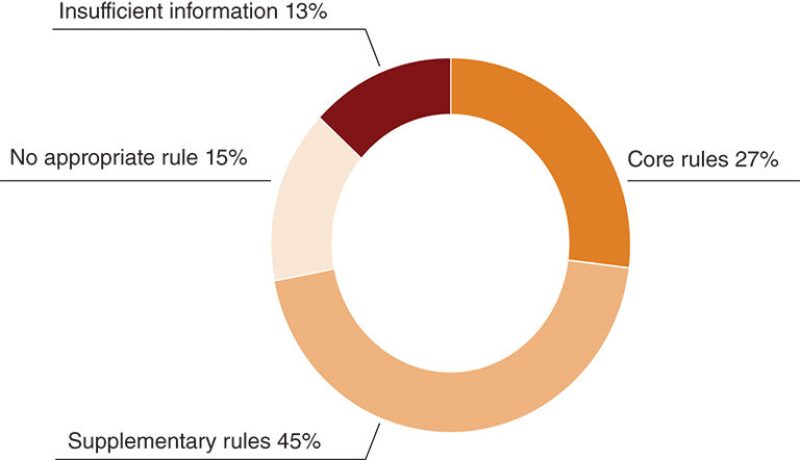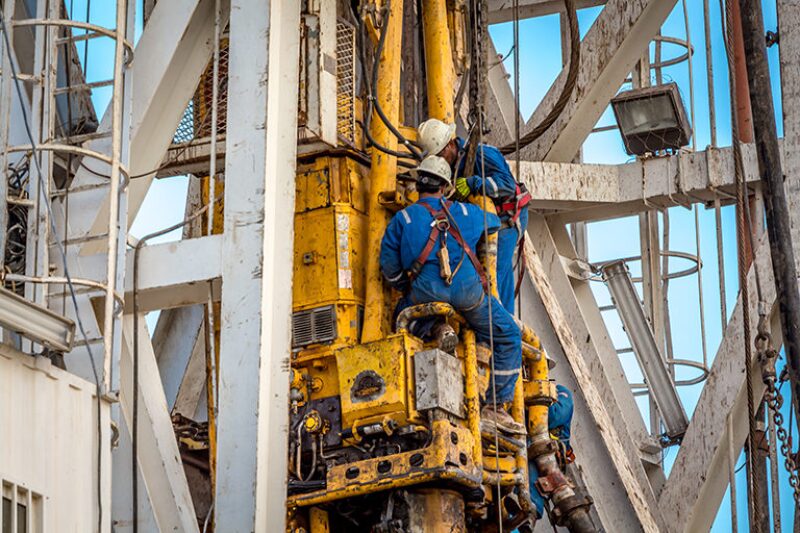The International Association of Oil & Gas Producers (IOGP) Life-Saving Rules are now considered industry good practice. Each rule has a simple icon and guidance to explain why it is important and on which aspects workers and supervisors should focus. The rules are intended to supplement and support existing company management systems, programs, and policies, but are directed at the actions individual front-line workers and supervisors need to undertake to keep themselves and their workmates safe. Each rule is also linked to controls and barriers which, if used properly, can prevent or avoid fatal incidents.
Shell provides an example of how successful and sustainable the implementation of a robust set of Life-Saving Rules can be. The company has seen a 75% reduction in fatalities and a 35% reduction in lost-time injuries since its rules were introduced in 2009.
Analysis of 1,484 fatal incidents reported by IOGP member companies over the past 20 years indicates that adopting, conforming to, and enforcing the simple IOGP rules may well have prevented many of these fatalities.
While IOGP member companies recognize the value of providing clear and consistent guidelines, efforts to re-energize the Life-Saving Rules program were triggered in 2015, when IOGP reported an increase in industry-related fatalities and fatal incidents, reversing a multiyear trend. Research showed that more than 70% of fatalities in that year could have been attributed to the industry failing to follow IOGP’s rules. Our newly published data for 2016 show only a slight improvement: 58% of the fatal incidents reported could have been avoided by following the rules. This is despite the fact that the causal factors of these incidents have remained broadly unchanged for many years. These include failures in training, competence, hazard identification, risk assessment, inattention, supervision, and procedures (Figs. 1a, 1b).


Some may want to pin these issues on squeezed margins, job uncertainty, or doing the same (or more) with less. However, the data do not support that premise, and the hard truth is that commitment to follow the Life-Saving Rules should not be affected or rationalized by market conditions. IOGP data show that there are no “new” accidents; only failures to learn or to implement learnings from previous incidents. The rules have been proven to save lives and the real challenge lies in finding out why these rules are not consistently followed.
To understand these challenges, IOGP strengthened its existing Safety Committee and appointed senior safety leaders from some of the largest oil and gas companies to oversee committee activities. One of the key aims is to rejuvenate awareness of the rules to prevent fatal incidents. As was done when the rules were initially launched by IOGP in 2013, the group is re-investigating, based on our data, which aspects of day-to-day workplace life will have the greatest effect in eliminating fatalities. This critical information will be used to deploy the most effective means to raise awareness of activities that are most likely to result in fatalities and modify worker and supervisor behaviors accordingly. The results of this project will determine simple actions individuals can take to protect themselves and others.
Raising Awareness, Changing Behavior
IOGP appreciates that implementing lessons learned from previous incidents and accidents is a challenge, particularly when companies are balancing many competing priorities.
IOGP has looked beyond the oil and gas industry for best practices in educating industries and companies about safety. The aerospace sector, for example, demonstrates how standardized procedural and engineering enhancements across the industry can have a direct and profound effect on reducing fatal accidents and incidents.
In contrast, oil and gas sector contractor employees are required to learn different procedures and “rules” for each client, even though the risks and safe operating practices are essentially the same. While individual oil and gas companies and contractors might gain incremental and local improvements by implementing their own golden rules, there is a much larger potential benefit to be realized in standardizing such requirements across the industry. This is what IOGP is doing.
While much has been done to reduce the risk of another major incident such as the Macondo and Piper Alpha tragedies, more change is needed to communicate and embed the simple instructions of the Life-Saving Rules. The imperative for these changes extends from board level right down to the shop floor. Migrating toward a standard set of industry guidelines will improve understanding and compliance, particularly in multilanguage and multicultural settings. Industry leaders must change their mindset from an aspiration of zero fatalities to an expectation of zero fatalities. This requires unwavering commitment and engagement at all levels to buy into the safety culture.
A Global Platform
SPE Offshore Europe 2017 will hold a panel discussion linking IOGP’s rules with successful industry efforts. The panel will discuss barriers to implementing learnings (including organizational and human factors) and suggest possible solutions to tackle complacency. Keynote speakers will include experts from IOGP and Shell as well as prominent organizational behavioral specialists. The conference will analyze why, when strong empirical and anecdotal evidence is available to substantiate the benefits of an industry safety standard, there continue to be difficulties in following them.
There are no quick fixes. Though standardization will help, there is an urgent need for engineering and design, policies, processes and procedures, and behaviors and human factors to all work together in managing risk. While the oil and gas industry could adopt “designing for safety” practices from the aerospace sector, it may take 4 or 5 years before the results of that effort funnel through the system. Meanwhile, the industry needs to work together now to “organize out” the risks that cannot be “engineered out.” Rules are essentially easy to follow, but harder to put in practice. Effective implementation requires strong leadership and a follow-up “how do you know?” process to ensure that the entire workforce is conforming.
As IOGP has made clear, the same types of incidents and accidents are killing people now as did a decade and more ago. The industry must grasp this unsettling fact and take the responsibility to eliminate fatalities from our operations. No one should risk death or injury at work. Simple instructions such as the Life-Saving Rules can ensure that everyone in the oil and gas industry is safe and fully responsible for implementing the meaningful measures that will ensure their own and their colleagues’ well-being.


